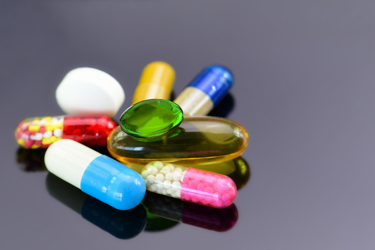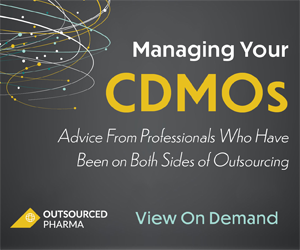The Oral Solid Dose Path To U.S. Partnerships

By Louis Garguilo, Chief Editor, Outsourced Pharma

The drug development industry and its CDMO relationships are driving down three demand-driven paths of product production.
First and most obvious, is the sudden, critical interest in the development and manufacture of vaccines that will require large-scale (global) volumes.
Over a much longer timeframe but accumulatively as intense, is the rise of large-molecule (biologics) – as well as cell and gene therapy – development and products.
The third might be described best as a national cacophony over the origin of “common medicines.” These are the daily doses doctors and hospitals rely on for maintaining patient health, as well as generic drugs consumers purchase over the counter.
All three have meaningful repercussions for drug companies selecting current CDMO relationships. Criteria need to evolve with cultural atmospherics as well as science and technologies, specific knowhow, quickened capacities and right-scale potential.
The third of this group may be the most intriguing.
Many consumer generics and “common medicines” are oral solid dose (OSD) format – pills, tablets, powders and the like.
These long-time OSD drugs are receiving the benefits of new technologies, formulation ideas, and other processing innovations often targeted at continual cost reduction.
As we will see, this offers drug companies and CDMOs challenges and opportunities, which are amplified by our current coronavirus-influenced marketplace.
One opportunity is a contrarian indicator when considering all the damage that’s been done by the Wuhan coronavirus pandemic.
Roger Graben, president of Alabama-based Vitruvias Therapeutics, Inc., a specialty generic pharmaceutical company, says for some of his OSD drug products, “sales have been higher than ever.”
“People weren’t just out at Costco buying toilet paper when the coronavirus hit,” he tells me, half in jest and half in serious market explanation.
“More patients opted for three-month supply of their medications, and that included their purchasing of common drugs. I think wholesalers have had some of that mentality as well. According to the script [prescription] data I’ve reviewed, demand in fact skyrocketed.
“So even though we have no product specifically used to treat COVID-19, we've had our highest sales ever in March, and we came close again in April.”
As for the challenging side within this evolving environment, Graben says his largest selling product based on dollar sales, has both its API and finished product made in Taiwan.
In this specific case that’s because Vitruvias’ co-development partner – who developed the API synthesis – is located there.
It still points to the fact that while there are growing national concerns and political pushes for more domestic production and materials procurement for generics and common medicines, that goal remains somewhat elusive.
But market dynamics are putting the staid OSD segment back in the news.
Many Ingredients And Partners
 While nowadays large-molecule processing soaks up the “complexity” limelight, OSD production is no walk in the park.
While nowadays large-molecule processing soaks up the “complexity” limelight, OSD production is no walk in the park.
“One factory produces the oral solid dose, right?” Graben starts his explanation, referring as he does at times to CDMOs and suppliers as such.
“Then there's another facility making the API, and more than one making precursors to that API. It's not uncommon to have four or five inactive ingredients. Where are they originating?
“If you coat your tablet, you may have three or four inactive ingredients, and each of those are made in separate facilities, and some have precursors made in others.”
“So,” he continues, “while I absolutely believe the recent service-provider consolidations in our industry are impactful, in reality they are focused on the production of the finished product.
“But again, who's producing everything that goes into that product? Most OSD is packaged in bottles; somebody's making the bottle, somebody else the cap, and so on … and somebody’s packaging it all up.
“In the typical tablet formulation, a separate factory is making your diluents such as lactose, microcrystalline cellulose etc., the disintegrant, the glidant, the lubricant, and so forth. We could go on …
“It takes all of those things and partners to make a tablet. And at a very competitive price.”
A Pricing Plot
Therefore, “domesticating” supply chains and materials-sourcing of common medicines and generics is more difficult than it sounds, although, agrees Graben, it is a worthy cause.
But with all the above, an intrigue builds in my mind. (And if it is only my mind, I hope readers will let me know.)
Although OSD drug products continue to maintain the lion’s share of drugs sold, innovator pharma companies as well as new biotechs are focused on the new era of biologics, large-molecule solutions to difficult diseases, and cell and gene therapies.
So at least in historically relative terms, the CDMO OSD market for new and pricier products may be waning.
At the same time and as described above, the spotlight on and competition for “common” everyday OSD drugs continues to intensify.
With that driven by consumer-side, political, and indeed industry support for domestic (U.S.) sourcing and production, we end up here:
Both drug sponsors and CDMOs searching for ways to boost innovation on OSD products to keep prices down and profits up (or at least stable), as they assess U.S.-based production options.
Graben well understands all this.
His second biggest OSD seller is manufactured in China, and the API in Taiwan. “That’s where the COGs [cost of goods] are competitive,” he admits reluctantly.
“You know, if it wasn't made in China or India, I'm not sure we'd be in the market.”
What could change that calculation is U.S.-based, OSD-production options where innovation pares COGs.
Graben offers a third product example to emphasis how important pricing is to a drug sponsor.
“We’ve an OSD product with a quite typical, actual net-selling price as low as 20% of the listed WAC – wholesale acquisition cost.”
It would be difficult to compete with a product of this type if made in the U.S. at a higher realized cost.
Many will claim we shouldn’t focus on price; this national debate is about quality, reliability, even national security.
Indeed it is. And those matter immensely. But so do COGs in a healthcare system driven by concepts of ever-shrinking prices on medicines.
Graben is not negative on what the future might bring; he does anticipate positive change.
“With some high-volume products particularly, the CDMOs here in the U.S. could get out a competitively priced product for us,” he says.
Neither is he nor others sitting idly by and waiting for that change.
Graben mentions the recent announcement of a U.S.-based CDMO receiving federal funding to produce common drugs for the domestic market.
He says he knows “there’re more of such kind of arrangements on the way,” this time perhaps even directly helping U.S. drug sponsors – maybe even a Vitruvias.
Let’s keep an eye out for increasing OSD production in the U.S.A.

